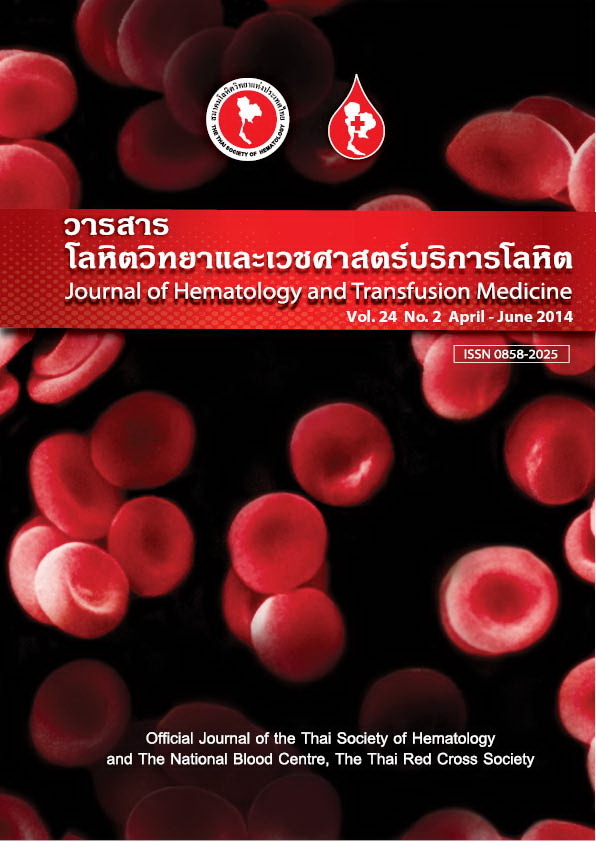Prognostic Impact of p53, Bcl-2, and p-glycoprotein Expressions in Peripheral T-cell Lymphoma, Not Otherwise Specified (PTCL, NOS) in Thai Patients
Keywords:
P53, Bcl-2, P-glycoprotein, Peripheral T-cell lymphoma, not otherwise specified, SurvivalAbstract
Abstract
Objective: To define the expression of p53, Bcl-2, and p-glycoprotein and to correlate the findings with disease parameters, response to therapy, and clinical outcomes of patients with PTCL, NOS. Materials and Methods: Adult patients with diagnosis of PTCL, NOS were reviewed from 2001 to 2012. Clinical parameters and treatment outcomes data were extracted. The specimens were stained for p53, Bcl-2, and p-glycoprotein. The results were analyzed for association with disease stage, IPI, PIT score, response rate (RR), and overall survival (OS). Results: Forty-nine patients (38 males, 11 females) were enrolled. The median age was 58 years old. Of those, B symptoms were presented in 55% and elevated LDH in 54%. Eighty-two percent had good ECOG scores, 61% in stages III-IV, 80% with extranodal lesions, and 40% with marrow involvement. Sixty-three percent were classified as low to low-intermediate risk according to IPI and 46% had PIT score of 0-1. Most patients (74%) were treated by CHOP chemotherapy. Of 35 patients evaluated, the ORR overall response rate was 63% with 40% complete remission. P53, Bcl-2, and p-glycoprotein were positive in 84%, 47%, and 29%, respectively. Expression of these biomarkers was not significantly correlated with survivals nor any prognostic factors. Median survival was 16.2 months. With univariate analysis, OS was significantly associated with clinical stage, IPI, and PIT score but not with the biomarker expressions. All of them remained significance with multivariate analysis. Conclusions: PTCL, NOS presented more in males with extranodal lesions and advanced stage. Less than half of patients achieved CR with CHOP regimen. The expressions of p53, Bcl-2, and p-glycoprotein did not show any significant influence on prognostic predictors and OS.



